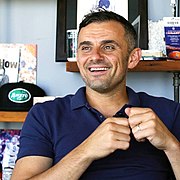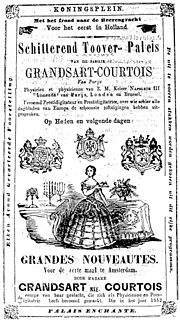Design
Design
Personality
Chart Properties
Your Cross represents the specific theme of your life. This cross embodies your unique potential & the lessons you're here to learn, providing a roadmap to fulfilling your life purpose.
We use the UTC birth time and date to do the calculations required to generate your Human Design chart.
Buy Tokens
Pay as you use, no expiry and no subscription required.Prompt Ideas
Get inspired with some epic prompt ideas.Herman Heijermans's Biography
Dutch journalist, editor, critic, social-democrat, naturalistic playwright and short story writer. Plays like “Op hoop van zegen” and “Eva Bonheur” became literary classics. The lament of fisherman’s widow Kniertje “De vis wordt duur betaald” in his play “The Good Hope” became a Dutch expression.
He was the fifth child and eldest son of Herman Heijermans (16 Dec 1824, Rotterdam – 18 Febr. 1910, Rotterdam) and Matilda Moses Spiers (25 Augustus 1833, Rotterdam – 13 January 1906, Rotterdam). His father worked as a journalist for the Nieuwe Rotterdamse Courant and Het Zondagsblad. They married on 25 February 1857 and got between January 1858 and September 1876 eleven children. They were assimilated Dutch Liberal Jews, that wished for their children a better place in society. Four of their children became noted Dutch civilians, who helped to emancipate the underprivileged members of the Dutch society.
His sister Catherina Mariam “Marie” Heijermans (14 October 1859 3 AM, Rotterdam – 26 September 1937, Amsterdam) became an artist. His sister Ida Sarah Heijermans (9 or 28 December 1866 (BC not found) – 8 April 1943, Amsterdam) became a feminist and social-democratic writer of children’s books (ps. Ferdinand Keizer). His brother Louis Heijermans (22 Dec 1873 12 AM, Rotterdam – 22 July 1938, Amsterdam) became a physician in social medicine and co-founder of the Amsterdam GGD (Municipal Health service).
Herman Heijermans became probably the most influential Dutch playwright, whose social works were translated in many languages. He nevertheless did not profit from his early international success, as the Netherlands only joined in 1911 the Convention of Bern (9 Sept 1860) that regulated the protection of literary and artistic works. For this reason he moved to Berlin in 1917. Here he wrote for the Berliner Tageblatt (Falklandjes), the Vossische Zeitung, Vorwärts (theatre critics), Die Woche (columns) and the Frankfurter Zeitung (feuilleton).
After graduating from the HBS secondary school, Heijermans tried several jobs at a bank and as a rag trader (1887-8). The last was a fiasco and almost made him bankrupt (1888). At the end of that that year his orthodox and rich-born Jewish fiancée Betsy Vles broke the relation. From 1888 to 1892 he had trade business in household articles, after which he decided to become a writer/journalist like his father. But attendant poverty and failure and his criticism of the bourgeois moral that neglected the needs of many lost and poor souls, would become his major themes.
Heijermans debuted in 1891 in the Zondagsblad with short stories and a column about theatre. In 1892 he moved to Amsterdam and started a career as a writer. In 1893 he became a critic of drama for The Telegraaf newspaper. He did not spare anyone, and got the reputation of “indringerig joodje” (offensive Jew). From 1894 till 1917 he published humoristic sketches on Jewish family life in the newspaper Algemeen Handelsblad as Samuel Falkland jr. He also published his own plays, but used pseudonyms for many reasons.
His first play, Dora Kremer (1893), was not a success and was savaged by the reviewers, possibly in order to get a revenge on their hated colleague and critic. On 18 May 1893 in Rotterdam his play Ahasveros was performed, under the pen-name Ivan Janckowitz. It was a success and was also performed in Paris.
Personal
In 1894 he met Maria Sophia Peers (8 April 1871, Rotterdam – 10 October 1944, Amsterdam ), a cabaret singer. Maria was officially married with Samson Weening on 30 April 1890 at Amsterdam. She had two children from Weening, but he had left her for a career in America. Heijermans and Peers decided to live together (1886, Wijk aan Zee). He considered her his legal wife, but for the Law and the neighbours she was not. After a long juridical struggle Peers divorced 2 April 1896 from Weening and married Heijermans officially on 30 March 1898. They got a daughter Hermine M.L. Heijermans (13 September 1902, Katwijk – 8 Augustus 1983, Amsterdam), a writer, who also became his biographer (Mijn vader Herman Heijermans, leven naast roem, 1973).
He wrote the novel Kamertjeszonde (1897, “Petty Sin”) about the bourgeois hypocrisy. His play Allerzielen (1905, All Souls), also dealt with the theme of a fallen woman. It was prohibited in some Roman Catholic countries. In 1907 Maria and Herman moved to Berlin. On 27 November 1918 Peers divorced Heijermans.
On 17 December 1918 he married at age 59, the from Max Blokzijl divorced actress Anna Elizabeth Henriëtte Jurgens (5 March 1889, Amsterdam – 1973). They got a daughter, the writer Marjolein Droomelot Heijermans (7 January 1920, Amsterdam – 27 January 1990, Amsterdam) and a son Herman Samuel Falkland Heijermans (13 November 1922, Amsterdam – 11 February 2009, Zutphen), who became an internal medicine physician in Zutphen.
Heijermans wrote more than sixty plays, mostly under his own name, but used also many pseudonyms: Ahasverus, Koos Habbema, Samuel Falkland jr, Dirk Akkerman, Barend Bof, Colijn, W.v.D., Deyssellianus, Emanuel Diaz, Barendje Donderkop, Doria, Mr. Icarus Forens, Gerrit, Gerritje, Frans Hoekstra, Ivan Jelakowitsch, van Janckowitz, Hendrik Kittelman, Hans Lidi Ficor, S. Mons, Hans Müller, W. van de Mijnssum, Cali Nicta, P. Peers, M. de Pinto, Heinz Sperber, J.W. Stoop, Koning Tempelman, E.W. Thijssen and Herman van de Zandhoeve.
He died on 22 November 1924 at home in Zandvoort of cancer (since 1923, had operation for it in 1924). The Social Democratic Labour Party (SDAP) organised on 25 November an impressive funeral in Amsterdam, that was attended by thousands of workers.
Link to Wikipedia
Your Cross represents the specific theme of your life. This cross embodies your unique potential & the lessons you're here to learn, providing a roadmap to fulfilling your life purpose.
We use the UTC birth time and date to do the calculations required to generate your Human Design chart.








